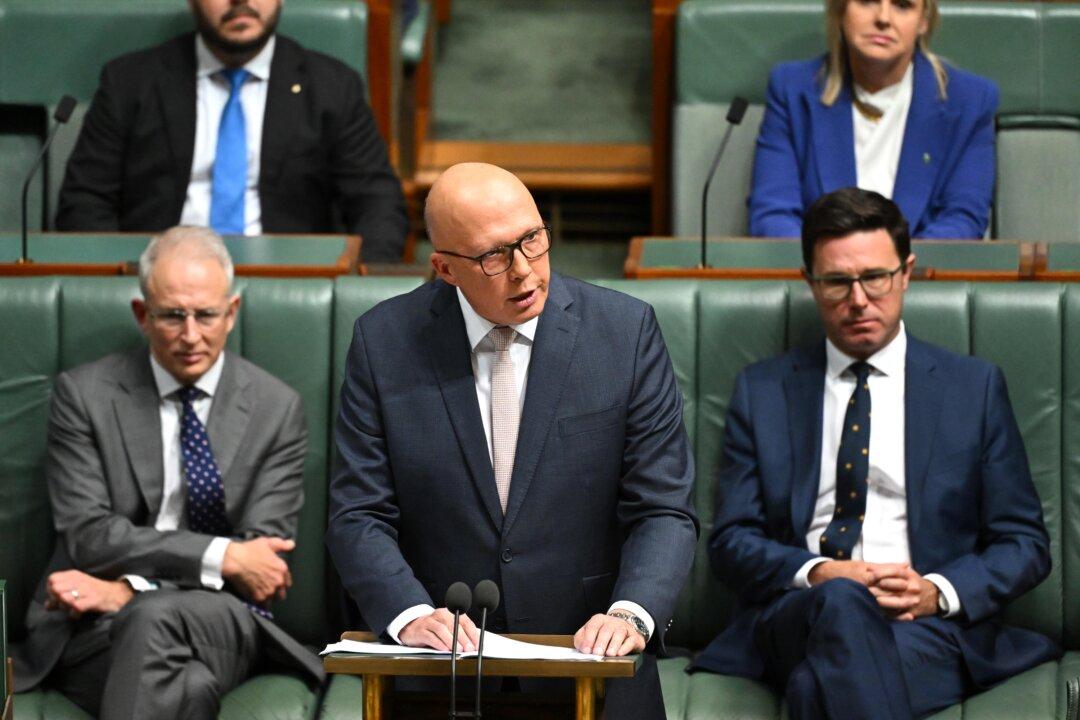How is it that the Greens are becoming the party of choice for anyone under 30, while also being the party most likely to destroy the future prospects of those under 30s?
Take housing for example.
The Greens yearn for the days when the state was the provider of miserable, cramped housing for Australians deemed too incompetent to organise their own.
This led to housing estates and stigma, and the “poor me” reminiscences of the current prime minister. No rational person would want to go back there.
When Liberal party founder Robert Menzies became prime minister in 1949 he began to sell off the Commonwealth’s public housing.
Is There Really Interest in More Public Housing?
Since then the market (private individuals and corporations seeing an opportunity to do a favour to someone else, and earn a living doing it) stepped in and developers provided almost all Australians with a place they could call home.It turns out there are hardly any Australians so incompetent they can’t secure a place of their own either to rent or to own, and that just like every other service, individuals contracting freely with each other are better at arranging accommodation for themselves than the government is.
But this is not the world for the Greens with their retro-Marxist preferences and Che Guevara tees.
They want to boost the public sector rental market and marginalise the private ones, and have adopted a swag of policies to this end, including the abolition of negative gearing.
This is a serious problem for people who can’t afford to buy and who have to rent. Even with the Greens promise to build 50,000 rental homes a year, it would only represent 1.5 percent of the total rental market, which would be overwhelmingly still financed by private owners.
The Greens claim that negative gearing keeps homeowners out of the market, but this is wrong for a number of reasons.
Around a third of Australians rent. Some of these are permanent renters, but others are homeowners-in-waiting.
In either case, there should be no enmity between renters and owners. But policies that handicap investors who rent, also handicap people who will be first-home buyers because it limits their renting options while they save a deposit.

How Does It Work?
The principle of negative gearing is that if you are going to tax investment income, an investor must be able to deduct their expenses from their income.If the investor owns a property in their own name, then that income includes what they earn from other sources, like their principal job.
Most plans to abolish negative gearing tacitly admit this. They may prevent investors from deducting expenses against their other income, but they still allow them to carry forward their losses until the property becomes cash flow positive.
This means that if the Greens were to abolish negative gearing, they don’t somehow save the whole of the deduction and bank it to government coffers. They save it, until they have to give it back in the future as deductions against future income.
In accounting jargon, the tax amounts to the interest value of the timing difference.
What they save is the interest they earn on the money that would have stayed with the taxpayer, if it had been allowed as a tax deduction.
This means the value to the government is much less than most of the models that are used to justify the policy, which magically assumes the government gets the benefit of the foregone deduction forever.
But it gets worse than that.
We are in a situation where we need drastically more properties than we have now, which means we need to encourage people to build more houses.
Negative gearing makes that possible.
How much longer would it take an investor to buy a property if they decided to wait until they had a deposit that would allow them to “positively” gear the property?
Positive gearing means that although you’ve borrowed, the property is returning enough income to give you a surplus.
When interest rates were around 2 percent, that probably wasn’t too much longer, but now they’re more like 6 percent. It’s quite a stretch.
Everybody Benefits
The reason we gear most investments (and most investors and companies have some degree of gearing) is so we can do more with the same amount of capital, which is exactly what the country needs to do at the moment.That’s a good thing for renters, who need more properties, and also for buyers, who also need more properties.
It’s also a good thing for the government. If investors can leverage their capital, there is more economic activity and the government gets to tax it.
There is GST on new buildings and on renovations, and there is payroll tax on building companies, and income tax from the companies and the tradies who do the work.
All models I have seen that favour abolishing negative gearing neglect this altogether.
And then there is the tax on borrowings. Again, most models advocating abolishing negative gearing don’t take into account the fact that the asset producing the income still produces the same income with gearing, it just splits it differently.
Without gearing it goes entirely to the owner, with gearing it goes to the owner and to the financier.
But both pay tax. The owner may pay less tax than if they owned the whole property, but the financier will pay an amount that is roughly similar to the difference.

Also, Homeowners Don’t Lose Out
The Greens’ myth is that negative gearing squeezes home buyers out of the market because it is a tax benefit that homeowners don’t get.When you do the figures, it is actually homeowners who are tax-advantaged.
While investors pay capital gains tax, the homeowner doesn’t. When it comes to real estate investment it is actually capital gains that provide the majority of earnings, particularly when gearing is involved.
So, the homeowner is already ahead, but it doesn’t stop there.
Homeowners also receive a benefit in that they don’t pay any tax on the “rent” that accrues to them by owning the property.
This is an unfamiliar concept to most, but if you regard a homeowner as an investor who lives in their investment, then it makes sense to look at what rent it is they would pay to live there and see that as part of their investment return.
This is called “imputed rent” and some countries, like the Netherlands and Switzerland, tax this as income.
We don’t, and I’m happy about that, but it is another tax advantage that homeowners get over investors who do pay tax on the rent they receive.
All of which means that when it comes to a contest over who can afford to pay the most for a residence, it is the homeowner that comes with all the advantages.
Another Green’s Party Idea That Is Not Feasible
The Greens also want to step beyond fiddling with the tax system to fiddling with the rental markets by imposing rent caps. We’ve been here before and they don’t work.However, we don’t need to look at Australian history to see what a bad idea rent control is.
Argentina has just elected a classical liberal president Javier Milei, and he has abolished rental controls in the country.
Overnight rents dropped by 20 percent as the number of houses on the market doubled. When you fiddle with property rights, property owners make smart choices.
The Greens complain that 10 percent of Australia’s housing is vacant (a figure which is about what it should be, given holiday houses, temporary vacancies because of property sales or rental vacancies, or people away for work or otherwise absent on holidays).
That figure would be a lot higher under rent caps as owners make the rational decision that if they can’t make a living at the Greens “reasonable” rents, then they should hold the house off the market.
If our millennial Australians don’t wake up soon to the Greens’ destructive ignorance about housing, they will walk into their own nightmare if they vote Greens’ policies in.
Not just home ownership, but renting reasonable digs, will be outside their budgets.
In that case, they may even need public housing, and just like our prime minister, in the future, they’ll be able to regale their kids with stories of how tough it was growing up in a public housing estate







